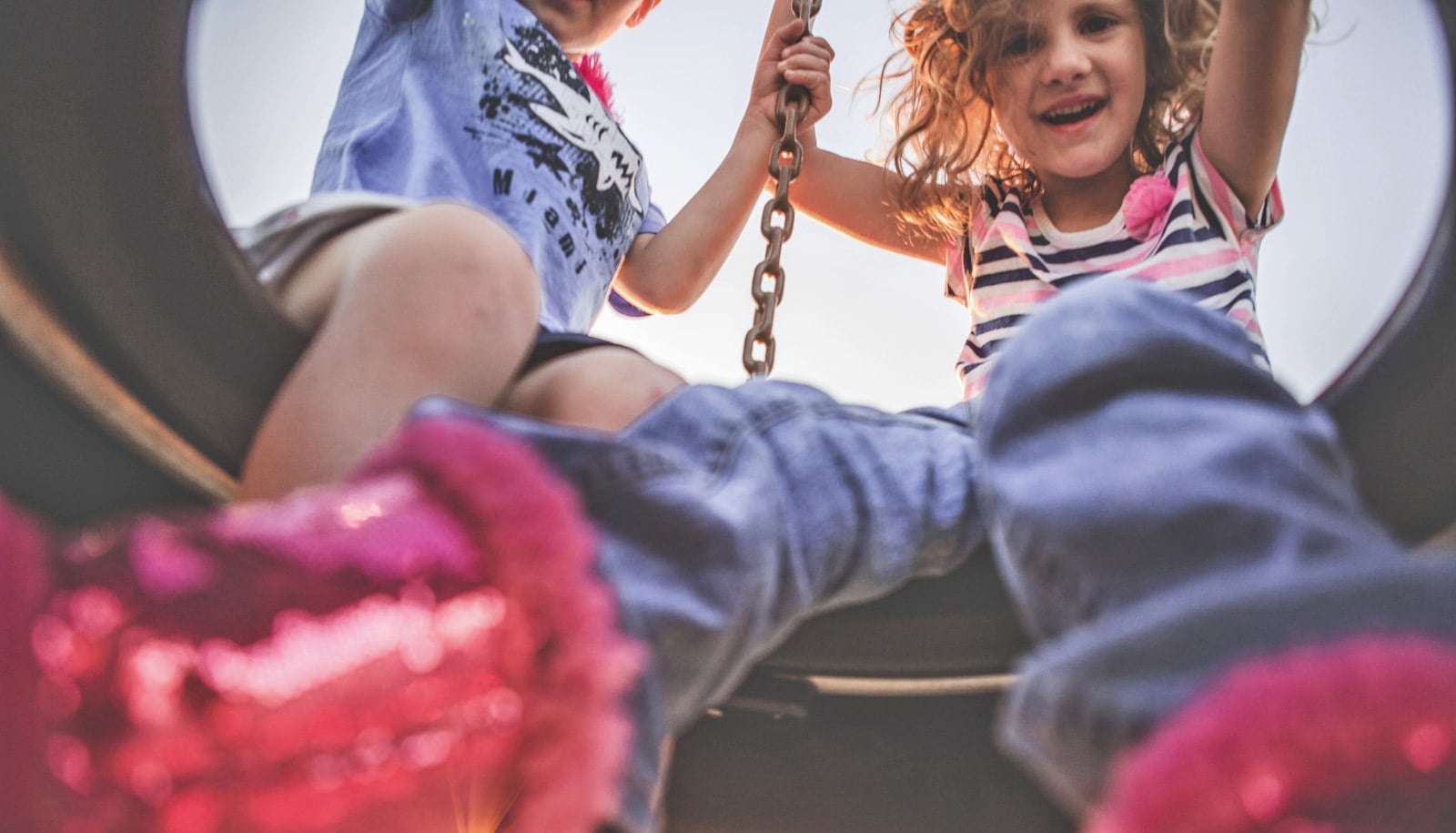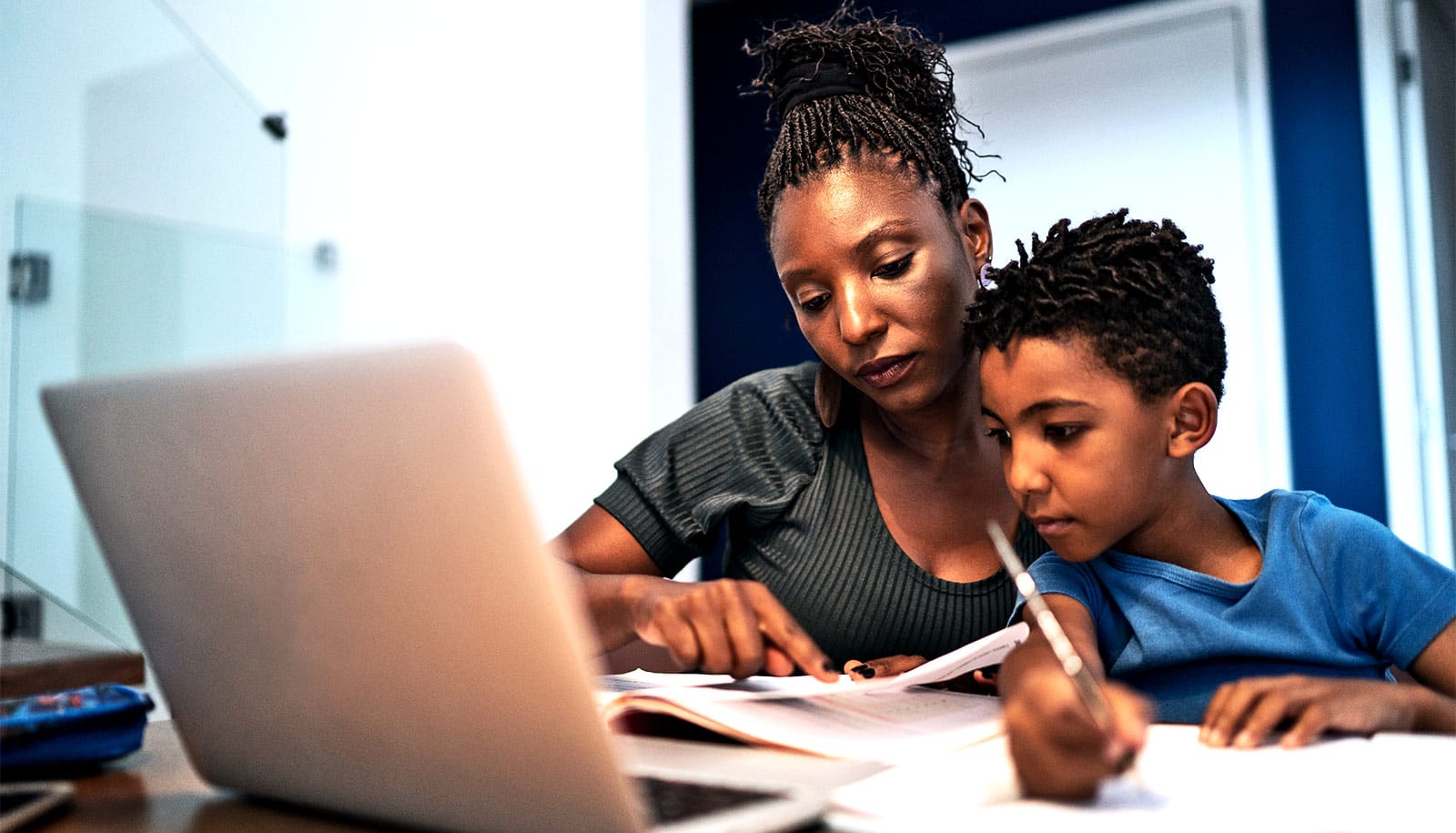
(Credit: Getty Images )
Kids with autism are doing okay at recess
"For children with autism, recess may be the hardest period of the day, where kids struggle the most." New research checks to see how true that is.

Children with autism communicate with peers at recess and participate in recess activities more often than people might assume, report researchers.
Jill Locke, a research assistant professor in the University of Washington department of speech and hearing sciences, and colleagues saw the potential in studying how children with autism experience recess, and how that could lead to opportunities for development and inclusion.
Schools, legitimately, focus on supporting students in the classroom, Locke says, and many children with autism spend most, if not all, their day in a general education setting. However, recess tends to be viewed only as a necessary break for students and teachers.
“For children with autism, recess may be the hardest period of the day, where kids struggle the most. There’s a lot of stimuli and disorganization on the playground,” says Locke, who specializes in interventions for children and adults with autism.
“The literature estimates that students with autism spend about one-third of their recess period alone, and that limits the opportunities to practice social skills, engage with their peers, and develop friendships, which is what typically developing children do at recess.”
Playground socializing
Locke and her team visited elementary schools at recess. They observed 55 elementary-age students with autism, recording not just their activities but also how they behaved during those activities—their emotions, communication with classmates, the positives and negatives. The study appears in the journal Autism.
The qualitative approach is what distinguished this study from other past research, Locke says. Studies have catalogued the recess activities of children with autism, but not their nuanced behaviors as they played, or how they relate to typically developing children on the playground.
“We know that kids with autism experience more isolation than typically developing kids, and when you look at their social networks, kids with autism often are on the periphery, not the core members of a peer group, and they experience more bullying and rejection than typically developing kids,” Locke says.
“Given how social impairment affects their daily life at school, we were surprised and pleased to see that many of the activities they engaged in are the same as what typically developing kids do.”
How kids play
The team found that recess periods varied from 10-35 minutes. During an average recess period, children with autism played alone for about a quarter of the recess time, but also spent 30 percent of the time with peers. The remainder was spent in proximity to other children, but not interacting with them.
“For kids with autism, facilitated recess is a much safer space…”
Nearly half of the participants spent time talking to other children. Forty percent of children played with toys or natural items such as sticks and rocks; almost one-third played on the swings, the monkey bars, slides, and other equipment; and about one-fourth joined in playground games like tag.
Communication was measured differently, based on how many times a child with autism initiated conversation with or responded to other children. Children in kindergarten through second grade initiated conversation an average of 8.3 times, while those in grades three through five initiated conversation an average of 6.7 times. In most cases, the children initiated conversation while engaged in a joint activity, such as playing with the same toys or during a game.
While not every conversation attempt was successful—a child with autism might not pick up on certain nonverbal cues, for example, or try to talk to someone from across the playground—the efforts show intent and motivation, Locke says.
And therein lie the opportunities to make recess more inclusive, she adds.
Ways to boost inclusion
The playground can be an environment that supports various interests and activities designed to improve motor, play, and social skills, Locke says. Monkey bars and swings and toys lend themselves to partner activities, the playground to a scavenger hunt and the lunch table to conversation games. That also likely necessitates more guidance from adult recess monitors or teachers, Locke notes, but inclusion and empathy also can be cultivated as part of classroom or school culture.
“The strategies we use with children with autism also work for most children,” she says. “We use visual strategies and direct language to reduce ambiguity and make things clearer for everyone. We want to make recess a welcoming, inclusive, and safe space for all kids.”
“For kids with autism, facilitated recess is a much safer space than joining an unsupervised basketball game. It’s less about winning and more about engaging, playing, and having fun together.”
The Autism Science Foundation, the National Institute of Mental Health, and a FAR Fund Early Career Award supported the work.
Source: University of Washington
The post Kids with autism are doing okay at recess appeared first on Futurity.
Share this article:
This article uses material from the Futurity article, and is licenced under a CC BY-SA 4.0 International License. Images, videos and audio are available under their respective licenses.


